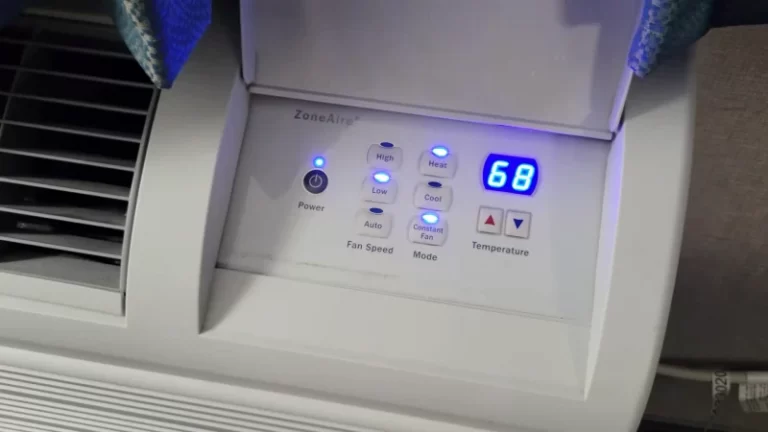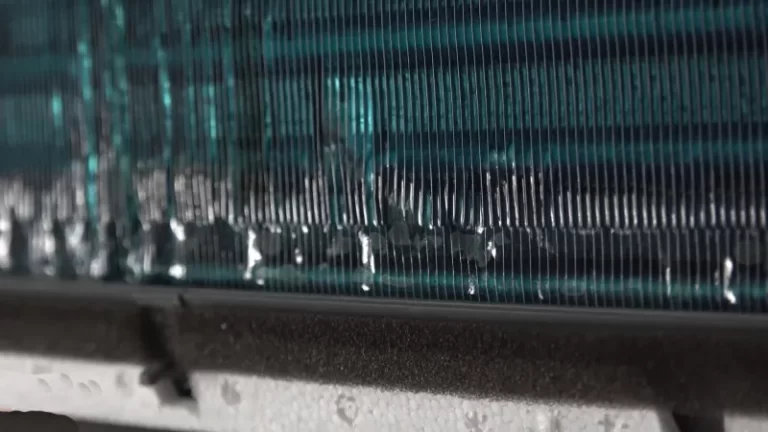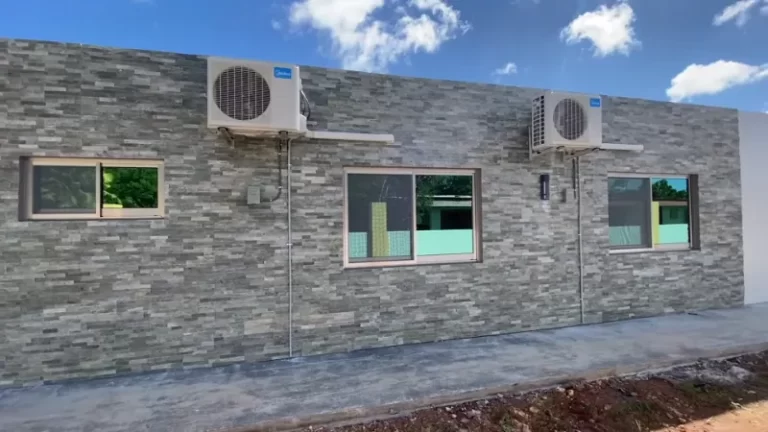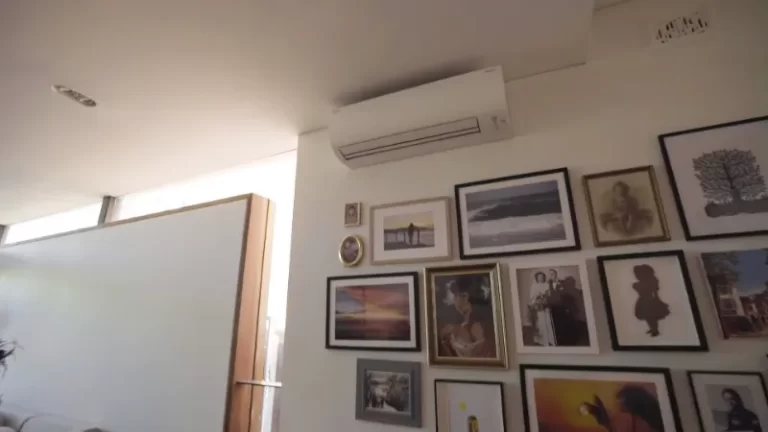Ice Inside Refrigerator Problems and Solutions
Ice buildup inside a refrigerator can be a frustrating problem for homeowners. Not only can it cause food to spoil, but it can also lead to damage to the fridge itself. Understanding the causes of ice buildup is the first step in addressing the issue.
In this article, we will explore the main causes of ice buildup inside refrigerators, including faulty door seals, incorrect temperature settings, and more. By identifying the root of the problem, you can take the necessary steps to resolve it and keep your food fresh.
You'll Learn About
Ice Inside Refrigerator Problem
Ice buildup inside a refrigerator is a common problem that can occur due to a faulty door seal. If the door seal is damaged, outside air can enter the refrigerator and cause ice to form. To fix this problem, you can check the door seal and replace it if necessary.
You should also make sure that the refrigerator is set to the proper temperature and that there is no ice buildup. If the refrigerator is not cooling enough, this may also contribute to ice buildup. To check if your refrigerator is cold, plug it in, set the thermostat dial to the correct temperature, and check for ice buildup.
If you are still having issues with ice buildup, it may be necessary to call a professional for assistance.

Faulty Door Seal
Ice buildup inside a refrigerator can be a frustrating problem for homeowners. Not only can it cause food to spoil, but it can also lead to damage to the fridge itself. Understanding the causes of ice buildup is the first step in addressing the issue.
In this article, we will explore the 5 to 10 main causes of ice buildup inside refrigerators, including faulty door seals, incorrect temperature settings, and more. By identifying the root of the problem, you can take the necessary steps to resolve it and keep your food fresh.
One of the main causes of ice buildup inside refrigerators is a faulty door seal. A door seal is responsible for keeping cold air inside the fridge and preventing warm air from entering. If the door seal is damaged, it can allow warm air to enter the fridge, leading to ice buildup.
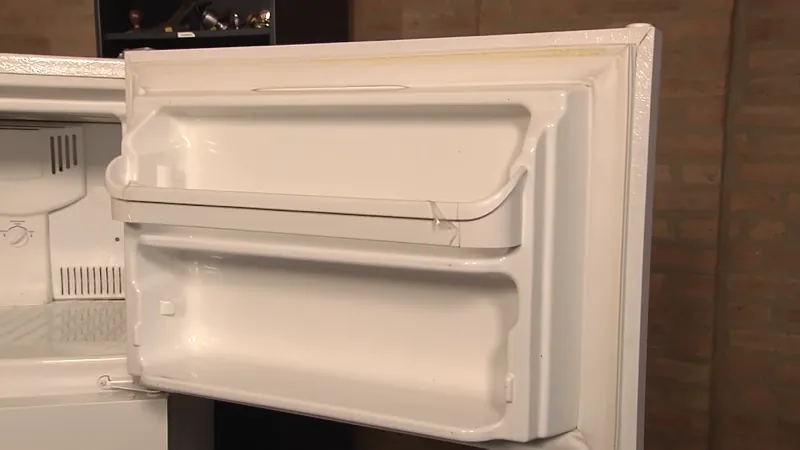
To Check the Door Seal, You Can Follow These Steps:.
- Close the fridge door on a piece of paper and check if it is airtight. If you can easily pull the paper out, then the door seal is not tight enough.
- Check for any visible damage to the door seal, such as cracks or tears.
- Clean the door seal with a mild soap solution and a soft cloth. Dirt and debris can accumulate on the door seal and prevent it from sealing properly.
If you find that the door seal is damaged, it is best to replace it. Replacing the door seal is a simple DIY task and can be done with just a few tools.
Importance of Regularly Checking the Door Seal
Regularly checking the door seal is important to prevent ice buildup inside the fridge. A faulty door seal can lead to increased energy consumption, as the fridge has to work harder to keep the temperature inside the fridge cold. By keeping the door seal in good condition, you can prevent ice buildup, save energy, and extend the life of your refrigerator.
a faulty door seal is one of the main causes of ice buildup inside refrigerators. By regularly checking the door seal, you can prevent this issue and keep your food fresh. If you find that the door seal is damaged, replace it as soon as possible to avoid further damage to the fridge and prevent ice buildup.
Incorrect Temperature Setting
A refrigerator is an essential household appliance that keeps our food fresh and prevents spoilage. However, sometimes, we may encounter a common problem of ice buildup inside the fridge, which can be caused by various factors. One of these factors is incorrect temperature setting.
Explanation of how a incorrect temperature setting can cause ice buildup The temperature inside the fridge must be set to the appropriate level to prevent ice buildup. If the temperature is set too low, the moisture inside the fridge will freeze, causing ice to form.
This can cause food to spoil, as well as reduce the efficiency of the refrigerator. On the other hand, if the temperature is set too high, the fridge will have to work harder to maintain the desired temperature, leading to increased energy consumption and decreased performance.
Steps to check the temperature setting and adjust it if necessary To check the temperature setting, you can use a thermometer to measure the temperature inside the fridge. If the temperature is too low, adjust the temperature dial or set point on the control panel to a higher temperature.
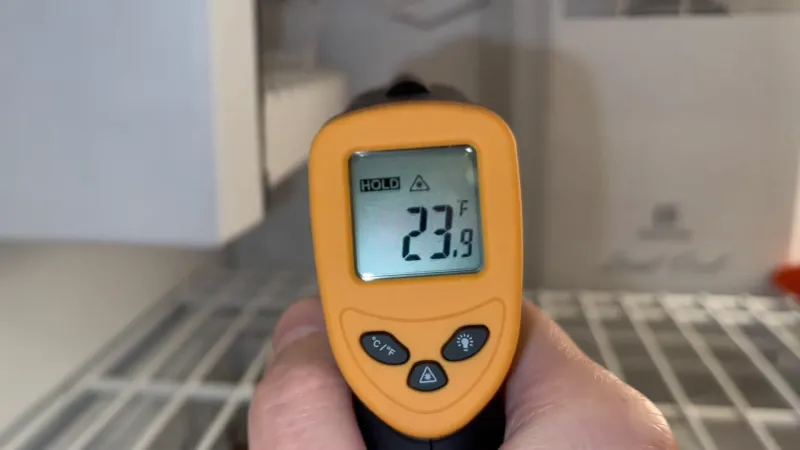
Similarly, if the temperature is too high, adjust the dial or set point to a lower temperature. It is recommended to set the temperature between 37°F and 40°F.
Regularly Checking the Temperature Setting to Prevent Ice Buildup
Regularly checking the temperature setting is important to prevent ice buildup and maintain the efficiency of the refrigerator. By ensuring that the temperature is set correctly, you can avoid food spoilage, reduce energy consumption, and increase the lifespan of the appliance. Moreover, regular checks can help detect any problems with the temperature control system, allowing you to address the issue promptly and prevent further damage.
incorrect temperature setting is one of the common causes of ice buildup in a refrigerator. By regularly checking and adjusting the temperature, you can prevent this problem and keep your food fresh and your appliance in good working order.
Air Leaks
How Air Leaks Can Cause Ice Buildup
When the door of the refrigerator is opened, warm air enters the fridge and the cooling system has to work extra hard to remove it and maintain the desired temperature. This leads to the formation of ice.
If the refrigerator has any air leaks, the warm air from outside can easily get inside the fridge and cause the temperature to rise. This increased temperature can lead to excessive ice buildup.
Steps to Check for Air Leaks and Fix Them if Necessary
- Start by checking the door seal: Run your hand along the door seal and look for any gaps or cracks. If you find any, clean the seal and try to close the door on a piece of paper. If the paper slips out, the seal is damaged and needs to be replaced.
- Check the gaskets: Check the gaskets that hold the door seal in place. If they’re damaged, they won’t be able to keep a tight seal around the door.
- Check the hinges: Make sure the hinges are tight and not worn out. Worn-out hinges can cause gaps in the seal and let warm air in.
Regularly Checking for Air Leaks to Prevent Ice Buildup
Regularly checking for air leaks is important to maintain the temperature of the fridge and prevent ice buildup. Any gap in the seal can cause the temperature to rise, leading to excessive ice buildup and reducing the efficiency of the fridge.
If left unchecked, it can even damage the fridge and increase energy consumption. Hence, it is essential to check the door seal, gaskets, and hinges regularly and fix any issues to prevent ice buildup and ensure the longevity of your fridge.
Blocked Air Vents
Blocked air vents can cause an accumulation of ice inside your refrigerator. This happens when the air circulation within the fridge is hampered by obstructions in the air vents. These obstructions can reduce the efficiency of the cooling system and cause the temperature inside the fridge to fluctuate, leading to ice buildup.
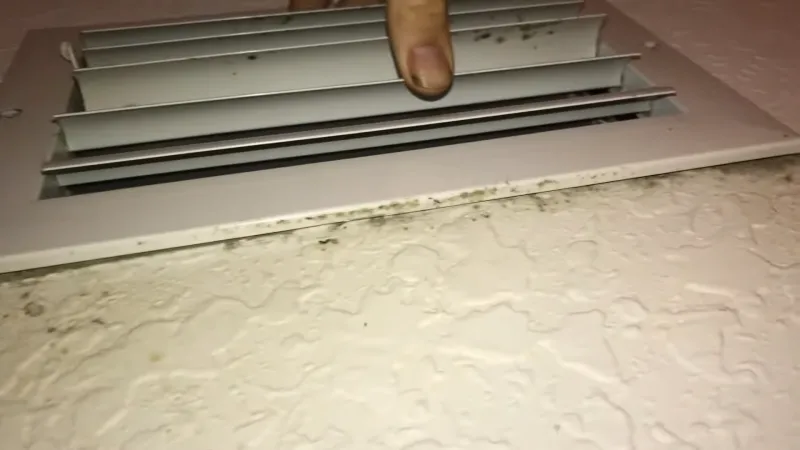
Steps to Check for Blocked Air Vents
- Visually inspect the air vents located on the back or sides of the fridge to see if they are blocked by food or other items.
- Check the air ducts and make sure they are clear of any obstructions.
- Use a soft brush or vacuum cleaner to remove any debris or dust buildup from the air vents.
Unblocking Air Vents
- If the air vents are blocked by food, simply remove the food and clear the way.
- If the air ducts are blocked, use a vacuum cleaner to clear the obstructions.
- Make sure the air vents are free of any debris before you plug the fridge back in.
Regularly Checking for Blocked Air Vents
- Preventing ice buildup inside your fridge will help to keep your food fresh and prevent it from spoiling.
- Blocked air vents can also affect the efficiency of your fridge and cause the cooling system to work harder, leading to increased energy consumption and higher electricity bills.
- Regularly checking for blocked air vents is an easy way to maintain the health of your fridge and keep it running smoothly.
if you are experiencing ice buildup inside your fridge, it is essential to check for blocked air vents. By regularly checking and unblocking the air vents, you can prevent ice buildup and keep your fridge running efficiently.
Dirty Condenser Coils
Dirty Condenser Coils Can Cause Ice Buildup
The condenser coils are an essential component of a refrigerator as they help to release heat from the fridge to the outside environment. When these coils become dirty, they can prevent heat from being released effectively, causing the fridge to work harder to maintain its temperature. This increased effort can result in ice buildup inside the fridge.
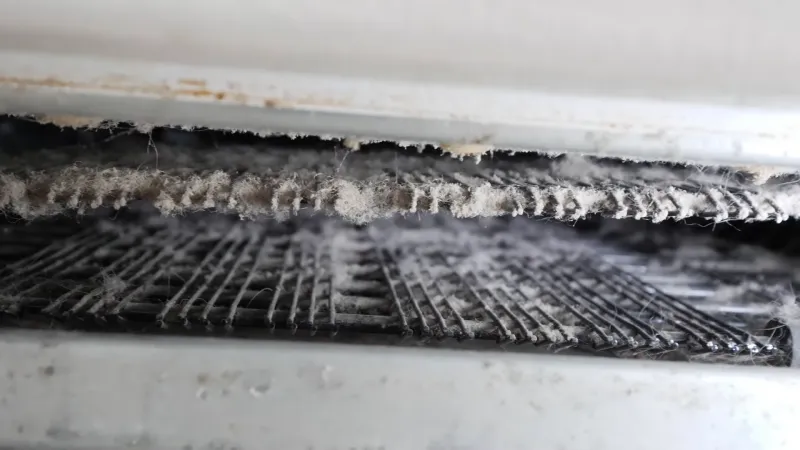
Steps to Clean the Condenser Coils and Prevent Further Buildup
To Clean the Condenser Coils, You Can Follow These Steps:
- Unplug the fridge: Before you start cleaning the condenser coils, make sure to unplug the fridge to avoid any electric shock.
- Locate the condenser coils: The condenser coils are usually located at the back or bottom of the fridge.
Clean the Coils
Use a brush or vacuum to remove any dirt, dust, or debris that has accumulated on the coils. Be gentle as you don’t want to damage the coils.
- Wipe the area clean: Use a damp cloth to wipe the area around the coils to remove any residual dirt or debris.
- Plug the fridge back in: Once you have finished cleaning the coils, you can plug the fridge back in and turn it on.
Regularly Cleaning the Condenser Coils to Prevent Ice Buildup
Cleaning the condenser coils regularly is important to prevent ice buildup inside the fridge. Dirty coils can cause the fridge to work harder to maintain its temperature, leading to ice buildup. By cleaning the coils, you can ensure that the fridge is functioning properly and prevent any potential damage to the fridge and food stored inside.
Clogged Defrost Drain
Clogged Defrost Drain A. Explanation of how a clogged defrost drain can cause ice buildup A clogged defrost drain can cause ice buildup in your refrigerator. The defrost drain is responsible for removing any melted frost or ice that has accumulated in the freezer.
If the drain becomes clogged, the water will start to freeze and accumulate, leading to ice buildup.
Steps to Check the Defrost Drain and Unclog It if Necessary
To check the defrost drain, you will need to locate it. On most refrigerators, it is located in the freezer section and can be found near the back wall. If the drain is clogged, you can unclog it using a straightened coat hanger or by pouring hot water over it.
If the clog is difficult to remove, you can use a mixture of baking soda and vinegar to help break it down.
Regularly Checking the Defrost Drain to Prevent Ice Buildup
It is important to regularly check the defrost drain to prevent ice buildup as it can cause your refrigerator to become less efficient and potentially lead to food spoilage. Regularly checking the defrost drain and unclogging it as needed can help ensure that your refrigerator is functioning properly and prevent any unwanted ice buildup.
Why Is Water Coming Out Of My Dishwasher Air Gap
Broken Defrost Thermostat
A refrigerator’s defrost thermostat is a crucial component that regulates the defrost cycle and ensures that frost does not accumulate inside the fridge. A broken defrost thermostat can cause the defrost cycle to fail, leading to the buildup of ice inside the refrigerator. This can cause the temperature inside the fridge to become too warm, leading to food spoilage and increased energy consumption.
Steps to Check the Defrost Thermostat and Replace It if Necessary
To determine if the defrost thermostat is the cause of the ice buildup, you need to first unplug the refrigerator and locate the thermostat. The thermostat is usually located near the evaporator coils and is a small metal device that is connected to the coils by two wires.
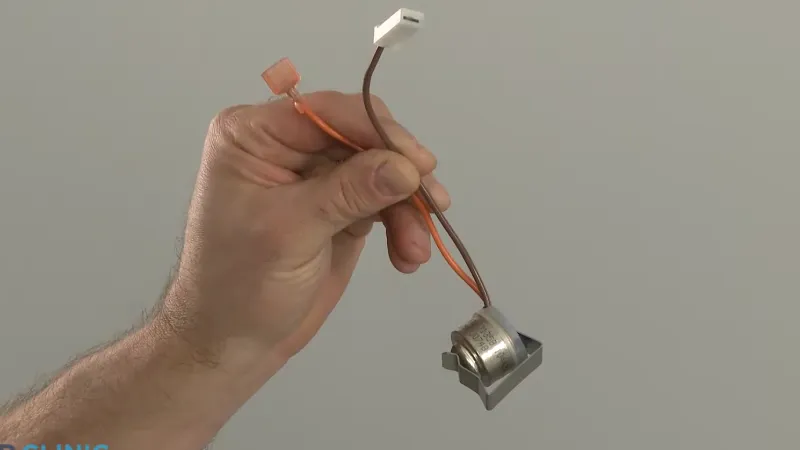
If the thermostat is broken, you will need to replace it with a new one. To do this, you will need to first unplug the wires from the old thermostat and then connect them to the new thermostat.
Regularly Checking the Defrost Thermostat to Prevent Ice Buildup
It is important to regularly check the defrost thermostat to ensure that it is functioning properly and to prevent ice buildup. If the thermostat is broken, the ice buildup can cause the temperature inside the fridge to become too warm, leading to food spoilage and increased energy consumption.
Additionally, a broken defrost thermostat can also cause the defrost cycle to fail, which can lead to further ice buildup and damage to the refrigerator. Regularly checking and replacing the defrost thermostat is an important step in preventing these problems and ensuring that your refrigerator operates efficiently and effectively.
Air Conditioner Refrigerant Line Vibration
Conclusion
Ice buildup inside a refrigerator is a common problem that can have serious consequences, such as food spoilage and damage to the fridge. By understanding the main causes of ice buildup, including faulty door seals, incorrect temperature settings, air leaks, blocked air vents, dirty condenser coils, clogged defrost drains, and broken defrost thermostats, you can take steps to prevent this problem from occurring.
It’s important to regularly check these elements to ensure that your fridge is functioning optimally and to prevent ice buildup. Taking proactive measures to prevent ice buildup in your refrigerator is essential to preserving the quality of your food and prolonging the lifespan of your appliance.
Don’t wait for the problem to become severe; take action today to prevent ice buildup in your refrigerator for a more enjoyable and stress-free experience.

